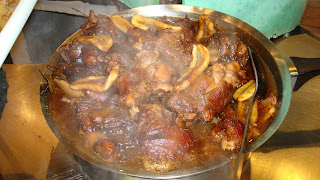Date: 7th November 2007
Location: Jakarta, Indonesia


A week after my trip to Jakarta, I was informed that the authorities in Indonesia's capital, Jakarta, have approved a law that bans people from giving money to beggars, buskers and hawkers as part of efforts to clean up the chaotic city of around 10 million people (Reuters, Tue Sep 11, 2007 3:40am EDT). It also outlaws busking, begging and street hawking, which was part of the old bylaw but was rarely enforced in a city where busy traffic intersections are often crowded with guitar-strumming youths, street children and hawkers.The law also bans people from living on river banks and squatting under toll roads. Poor migrants often build make-shift shelters in such areas, sometimes clogging up waterways in the flood-prone city and causing hygiene problems or fire hazards.Under the new rules, offenders can face detention up to 180 days and fines up to 50 million rupiah ($5,312).
What can I say? For all generous tourists, please think twice before you give to beggars. You might end up paying more to the non-beggars like the government.
























